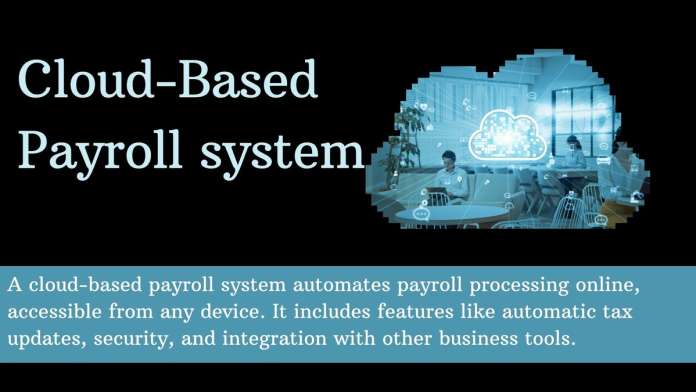In today’s digital age, businesses are increasingly shifting towards cloud-based solutions to manage various operations, including payroll. A cloud-based payroll system leverages the power of the internet to streamline payroll processes, ensuring efficient, accurate, and secure management of employee wages and related tasks.
Advantages of Cloud-based Payroll Systems: Flexibility, Security, and Efficiency

- Payroll Accessability: Unlike traditional payroll systems that require on-premise software and hardware, cloud payroll systems operate entirely online. This means you can access payroll data from anywhere, at any time, using any internet-enabled device. This flexibility is particularly beneficial for businesses with remote workforces or multiple office locations.
- Automatic Updates: One of the key advantages of a cloud-based payroll system is its automatic updates. These systems are maintained by service providers who ensure that the latest tax regulations and compliance requirements are always up-to-date. This minimizes the risk of errors and non-compliance, which can otherwise lead to costly penalties.
- Payroll Security: Security is another critical aspect. Reputable cloud payroll providers implement stringent security measures such as data encryption, multi-factor authentication, and regular security audits to protect sensitive employee information from cyber threats.
- User-Friendly Interface: Furthermore, cloud-based payroll systems often come with intuitive user interfaces and robust customer support, making them easy for HR staff and business owners to use effectively. They also facilitate seamless integration with other business tools such as accounting software, time tracking systems, and HR management solutions.
In essence, a cloud-based payroll system represents a modern, efficient, and secure way to handle payroll, offering numerous benefits over traditional methods. As businesses continue to evolve, embracing such innovative solutions is key to staying competitive and ensuring smooth operational workflows.
Essential Features of Cloud-based Payroll System
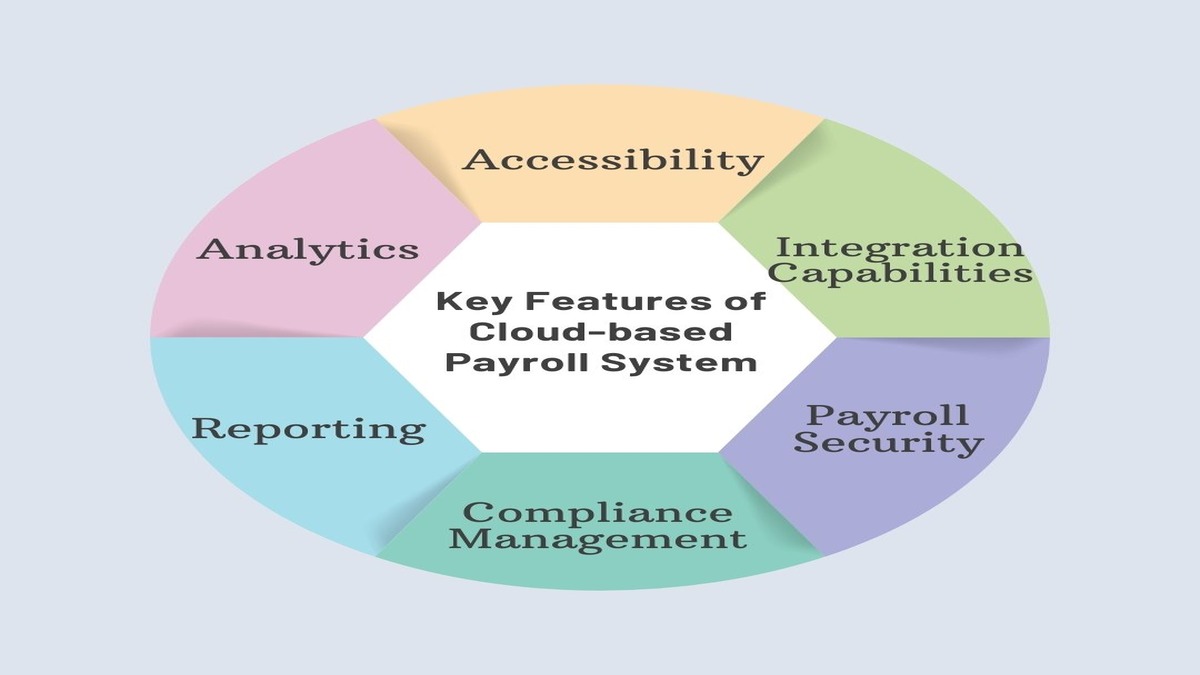
A cloud-based payroll system offers an array of essential features designed to streamline payroll management and enhance overall efficiency. At its core, such a system provides automatic payroll processing, calculating wages, taxes, and deductions with minimal manual input. This automation significantly reduces human error and ensures timely payments.
- Accessibility: Another pivotal feature is accessibility. Cloud payroll systems allow you to manage your payroll from anywhere with an internet connection. This flexibility is crucial for businesses with remote teams or multiple locations. Moreover, employees can access their payroll information anytime through dedicated portals, enhancing transparency and satisfaction.
- Integration Capabilities: Integration capability is another standout feature. Most cloud payroll solutions seamlessly integrate with other business systems like HR, accounting, and time tracking software. This integration ensures a unified data flow and eliminates discrepancies, providing a holistic view of your workforce management.
- Cloud Playroll Security: Security cannot be overlooked. Reputable cloud payroll systems employ advanced security measures such as encryption, firewalls, and regular backups to protect sensitive employee data. Multi-factor authentication also adds an extra layer of security, giving peace of mind to both employers and employees.
- Compliance Management: Compliance management is equally essential. Cloud payroll systems are regularly updated with the latest tax laws and labor regulations. This ensures that your business remains compliant, avoiding costly penalties and legal issues.
- Reporting and Analytics: Lastly, these systems often include robust reporting and analytics tools. These tools provide actionable insights into payroll expenses, helping businesses make informed financial decisions and optimize their payroll processes.
In summary, the essential features of cloud payroll systems—automation, accessibility, integration, security, compliance, and analytics—collectively streamline payroll management and enhance operational efficiency.
Benefits of Adopting Cloud-based Payroll System

Embracing a cloud-based payroll system brings a multitude of advantages that can streamline your business operations and boost employee satisfaction.
- Real-time access to data: One of the primary benefits is real-time access to data. Managers and HR professionals can retrieve payroll information on-the-go, making it easier to make informed decisions quickly.
- Cost Saving: Another significant advantage is cost savings. Traditional payroll systems often require substantial upfront investment in software and hardware. Conversely, cloud-based solutions typically rely on a subscription model, offering a more affordable and scalable option. This means lower initial costs and the flexibility to expand as your business grows.
- Enhanced security: It is an another compelling reason to transition to cloud payroll. Reputable cloud service providers employ advanced security measures, such as encryption and regular security audits, to protect sensitive payroll data. This level of security is often more robust than what smaller businesses could manage on their own.
- Automatic Updates: Additionally, automatic updates ensure that your payroll system is always compliant with the latest regulations. Staying compliant with tax laws and labor regulations can be a headache, but cloud payroll systems automatically update to reflect changes in legislation, saving you time and minimizing the risk of penalties.
- Streamlined Process: Moreover, streamlined processes can dramatically increase efficiency. By automating routine tasks like paycheck processing and tax filing, cloud-based payroll systems free up your HR team to focus on more strategic activities.
- Improved Employee Experience: Finally, improved employee experience is a noteworthy benefit. Employees appreciate the accessibility and transparency that cloud payroll systems offer. With self-service portals, they can easily view their pay stubs, manage direct deposit settings, and even access year-end tax documents without having to go through HR.
Overall, the move to cloud payroll is a smart step towards modernizing your business operations, ensuring cost-efficiency, security, and compliance while enhancing both managerial and employee satisfaction.
Steps for Implementing Cloud-based Payroll System
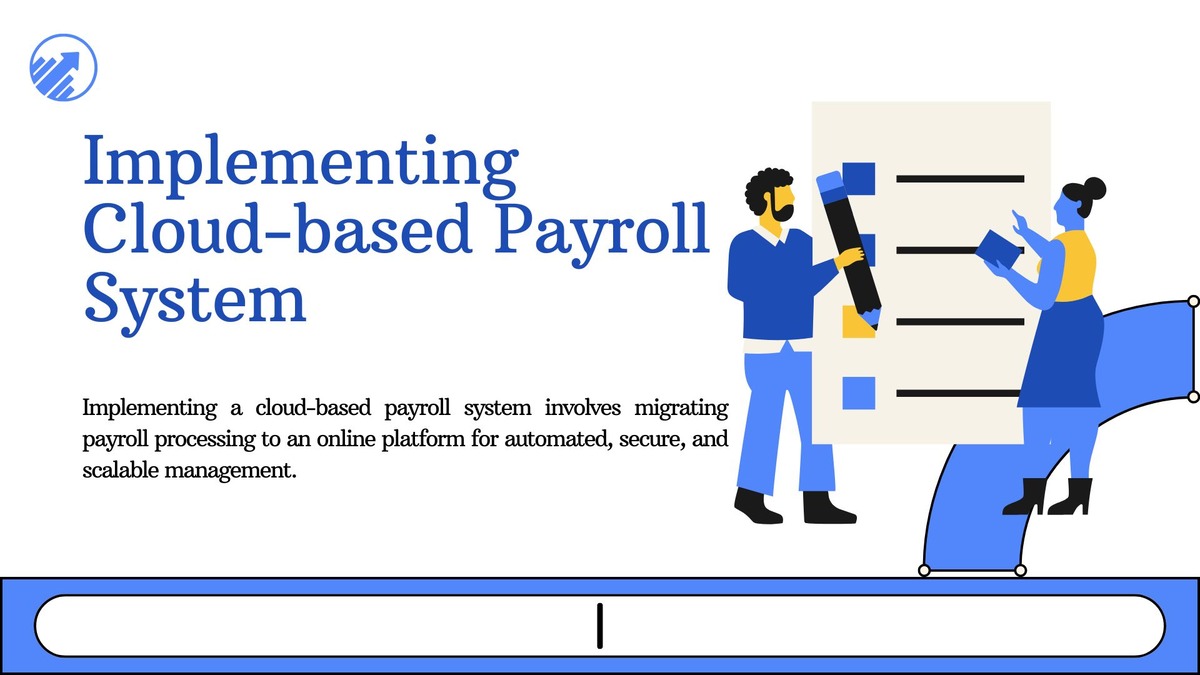
Implementing a cloud-based payroll system can revolutionize how your organization handles payroll management, ensuring efficiency and accuracy. Here are key steps to guide you through the process:
- Assess Your Needs: Begin by identifying the specific requirements of your business. Consider factors like company size, payroll frequency, and any unique payroll elements such as bonuses or commissions. Knowing your needs will help you choose a system that fits best.
- Research providers: Not all cloud payroll systems are created equal. Conduct thorough research to compare features, costs, and customer reviews of different providers. Look for systems that offer robust security measures and have a good track record.
- Plan Your Transition: Create a timeline for the switch from your current system to the new cloud-based one. It’s crucial to ensure there is minimal disruption to your regular payroll operations.
- Data Migration: Safely transferring existing payroll data to the new cloud system is a critical step. Backup all data before migration and ensure the new system can import this information correctly.
- Training: Train your HR and payroll staff on how to use the new system. Many providers offer training sessions or resources, so take advantage of these to smooth out the transition.
- Test the System: Before fully rolling it out, conduct a test run. Use a parallel payroll processing approach where you run the new system alongside the old one to catch any discrepancies.
- Go Live: After successful testing, you can fully switch to the new payroll system. Continually monitor its performance and make any necessary adjustments.
By following these steps, you can successfully implement a cloud-based payroll system that enhances efficiency and accuracy in your payroll process.
Common Challenges and Solutions in Cloud-based Payroll System
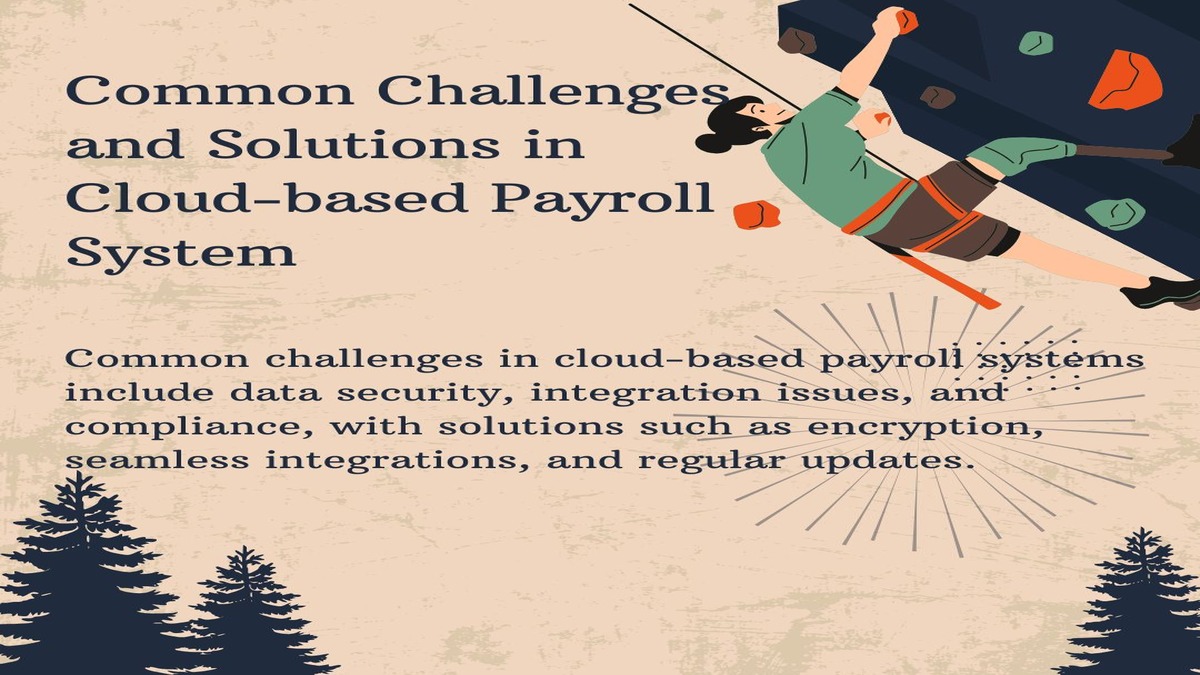
Implementing a cloud-based payroll system offers significant benefits but isn’t without its challenges. Understanding these challenges and how to address them is crucial for a smooth transition.
-
Data Security Concerns:
One of the primary concerns with cloud payroll is data security. Storing sensitive employee information in the cloud can be worrisome. To overcome this, choose a payroll provider that offers robust security measures such as encryption, multi-factor authentication, and regular security audits. Ensure compliance with relevant data protection regulations, like GDPR or CCPA.
-
Integration Issues:
Integration with existing HR and accounting systems can pose challenges. It’s essential to select a cloud payroll solution with flexible APIs and integration capabilities. Work closely with IT teams and payroll service providers to ensure seamless integration, minimizing disruptions during the transition period.
-
Employee Access and Training:
Transitioning to a new system can come with a learning curve for employees. Providing comprehensive training sessions and support materials can make the switch smoother. Opt for user-friendly payroll platforms that offer intuitive interfaces, making it easier for employees to adapt and access their payroll information.
-
Technical Support and Reliability:
Technical glitches and downtime are potential issues that can disrupt payroll processing. Partner with a reputable payroll service provider known for their reliability and robust customer support. Ensure they offer 24/7 support to address any issues promptly.
-
Cost Management:
Budget constraints can be a concern when shifting to cloud-based payroll. Weigh the initial setup costs against long-term savings from streamlined processes and reduced manual errors. Consider scalable pricing models that grow with your business to manage costs effectively.
By proactively addressing these challenges, businesses can enjoy the efficiency and convenience of cloud-based payroll systems while minimizing potential pitfalls.
Conclusion: Future of Cloud-based payroll system:
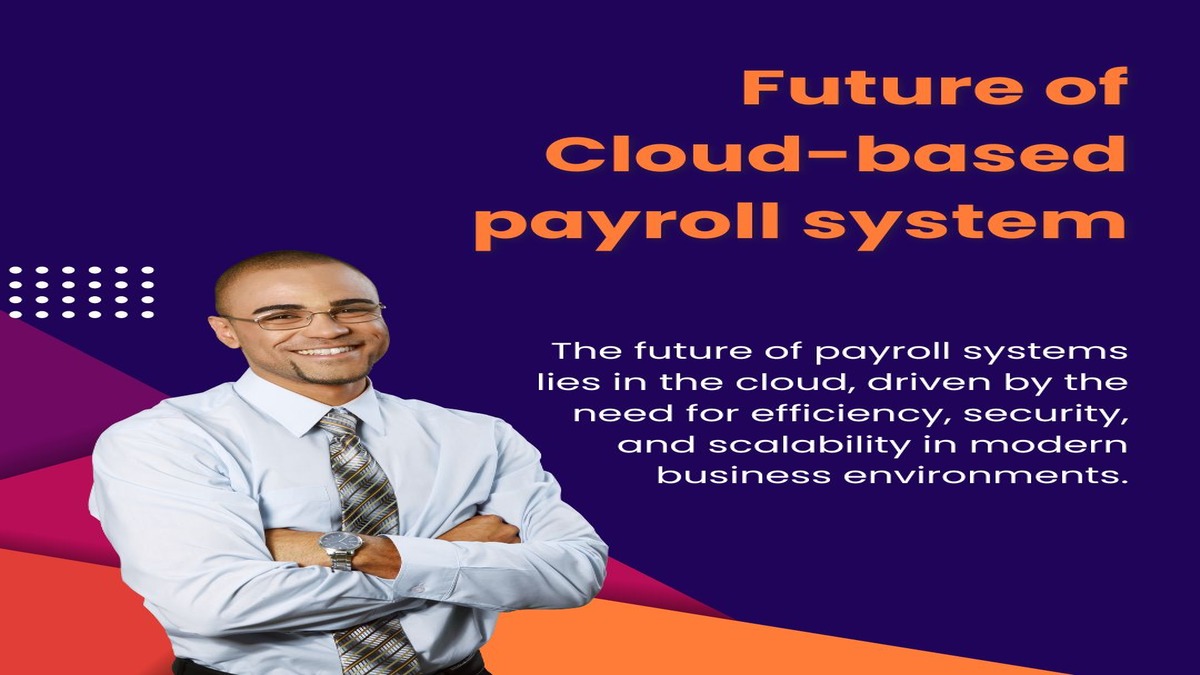
The future of payroll systems is undeniably anchored in the cloud, driven by the need for efficiency, security, and scalability in today’s fast-paced business environment. Cloud-based payroll systems are not just a fleeting trend; they represent a significant shift in how organizations handle their payroll processes.
-
Adapting to Evolving Business Needs
One of the most compelling aspects of cloud payroll is its ability to adapt to evolving business needs. With real-time updates and seamless integrations, these systems can keep up with regulatory changes, ensuring compliance with local and international laws. This reduces the risk of costly errors and compliance issues, a major advantage for businesses of all sizes.
-
Enhanced Security Features
Another critical factor is the enhanced security provided by cloud payroll solutions. Unlike traditional systems that are vulnerable to data breaches and operational disruptions, cloud-based systems employ advanced security measures such as encryption, multi-factor authentication, and regular security audits. This ensures that sensitive employee information is well-protected.
-
Scalability and Flexibility
The scalability of cloud payroll systems cannot be overstated. As businesses grow, they can easily add new employees and expand into new regions without overhauling their entire payroll infrastructure. This flexibility allows for more efficient management and reduces the burden on HR departments.
-
Integrating AI and Machine Learning
Moreover, the integration of artificial intelligence and machine learning into cloud payroll platforms offers predictive analytics and insights, helping businesses make informed decisions. These innovations are set to further elevate the efficiency and accuracy of payroll processes.
In conclusion, cloud-based payroll systems are not only the present but also the future of payroll management. By embracing these technologies, organizations position themselves for greater agility, enhanced security, and sustained growth in an increasingly digital world.
Read More: Top 10 Popular SaaS Marketing Blogs in 2024

